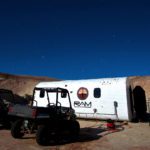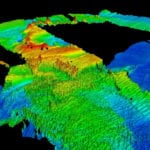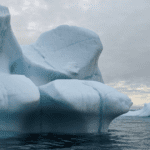Q&A with Robert Izett
Whether it’s glare off helicopter windows or drones that want to fly themselves home, Robert Izett is well-versed on the struggles of photographing from a bird’s eye view. A recent graduate of Oceanography at the University of British Columbia and soon-to-be postdoctoral researcher at Dalhousie University, Robert’s PhD thesis focused on deriving estimates of marine net community production at high-resolution scales in the Northeast Pacific and Arctic Ocean.
Robert was a 2020 Visualizing Science Contest participant whose images were selected for the 2021 covers of Environmental Reviews and Anthropocene Coasts.
What is the biggest challenge you face with taking photographs from a helicopter and what advice would you share to navigate this challenge?
For me, the biggest challenge with taking photos from the helicopter was struggling with glare from the windows. Fortunately, I was often able to poke the camera out of a small window on the side of the helicopter, but in cases when that isn’t possible, it was normally best to press the lens as close to the window as possible.

Helicopter hooray | Robert Izett
Tell us about a time when taking a photo with a drone didn’t go as planned.
I once (foolishly) tried to record my wife and I kayaking while actually IN the kayak. I had pictured a beautiful scene of us calmly paddling through the fjord, but what really happened was anything but beautiful or calm…
For starters, I struggled to capture much of the scenery around us because the drone’s obstacle avoidance software wouldn’t enable it to get close enough to the water to fit the surrounding mountains and forest in the frame. Then, after messing about with the drone for a while, the battery reached a low-threshold, and the drone began to automatically return “home” (basically, the point where it took off). However, because we were in a moving kayak, we were no longer at the home location! So, I overrode the homing mechanism, and tried to land the drone on the kayak, but again, the obstacle avoidance software made it tricky to actually get the drone close enough to the boat.
In the end, we landed it safely, with my wife catching it over the side of the kayak, while I was steering the drone and kayak, and screaming at her, “CATCH IT!” Needless to say, that was likely the last time I try to fly the drone from a kayak…

Fluvial flan | Robert Izett
If you could go anywhere in the world to take a single photo, where would you go and what would you capture?
I would love to capture a photo of a Spirit Bear in British Columbia’s Great Bear Rainforest.




